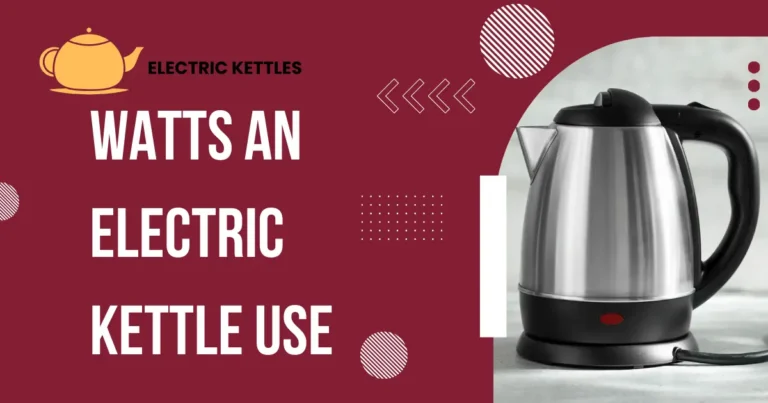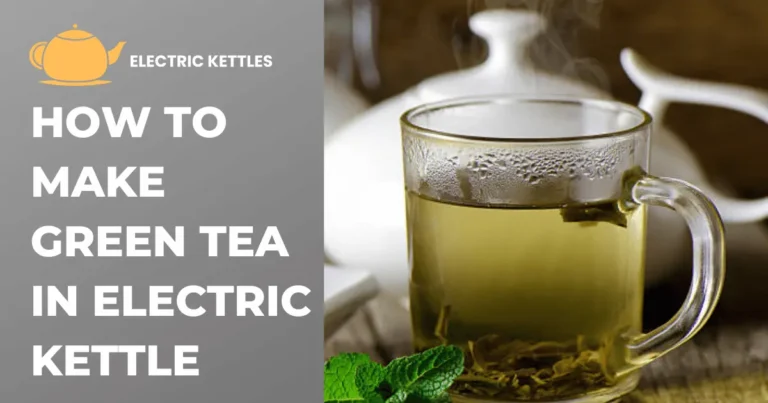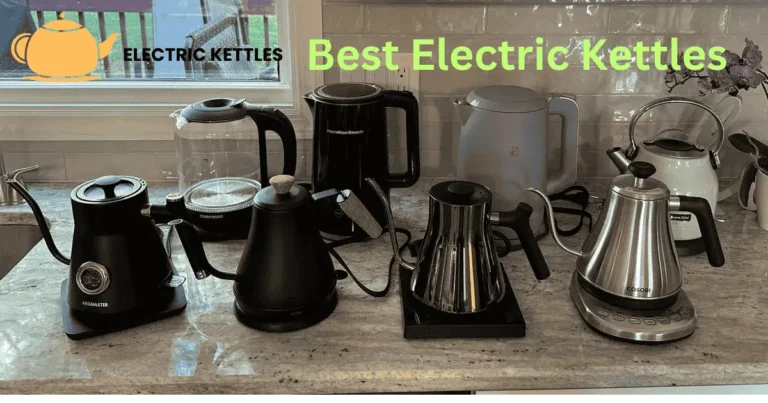How to Remove Plastic Smell From Electric Kettle
Electric kettles are popular for their convenience. However, new kettles often have a plastic smell. This smell can come from the materials used in manufacturing. It’s important to address this issue for a better experience. Using a kettle with a strong plastic smell can affect the taste of your drinks.
A smell-free kettle is essential for health and enjoyment. A strong odor can be unpleasant and may even cause health concerns. Removing the plastic smell helps ensure that your beverages taste fresh. It also makes the kettle more enjoyable to use. Regular cleaning and maintenance can prevent smells from returning.
Common Causes of Plastic Smell
1. Materials Used in Manufacturing
Many electric kettles are constructed from plastic or contain plastic components. When the kettle is heated, these materials can release volatile organic compounds (VOCs), which often result in an unpleasant odor. This is especially common in new kettles, as they may have higher levels of residual odors from the manufacturing process.
2. Inadequate Cleaning Before First Use
If the kettle is not cleaned properly before its first use, residues from the manufacturing process can linger. This includes dust, oils, and other contaminants that can contribute to an unpleasant smell. Manufacturers often recommend rinsing and cleaning the kettle thoroughly before using it for the first time to avoid this issue.
3. Lack of Proper Maintenance
Frequent use of the kettle without regular cleaning can lead to the accumulation of minerals from hard water, as well as food particles or other residues. Over time, this buildup can start to emit odors, especially when the kettle is heated. Regular cleaning is essential to keep the kettle smelling fresh and functioning well.
4. Prolonged Exposure to Heat
Extended exposure to heat can cause the plastic components of the kettle to break down, leading to the release of odors into the water. This degradation can happen over time, especially if the kettle is repeatedly boiled without adequate cleaning. If left unchecked, this can create a persistent plastic smell that may affect the taste of your beverages.
Preparation Before Cleaning
1. Gathering Necessary Supplies
Before you start cleaning your kettle, gather all the supplies you will need. This typically includes white vinegar or baking soda, water, a soft cloth or sponge, and lemon juice if you choose to use it. Having everything ready will make the cleaning process smoother and more efficient.
2. Safety Precautions
Safety is important when cleaning an electric kettle. Ensure that the kettle is unplugged and completely cool before starting. This will prevent burns and electrical accidents. Also, be cautious with any cleaning solutions you use. Avoid harsh chemicals that could damage the kettle or leave harmful residues.
3. Inspecting the Kettle
Take a moment to inspect your kettle for any visible dirt or buildup. Look for any mineral deposits around the heating element or inside the kettle. This will help you identify areas that may require extra attention during the cleaning process.
4. Preparing the Cleaning Solution
Depending on the method you choose, prepare your cleaning solution in advance. For vinegar, mix equal parts of vinegar and water. If using baking soda, you can create a paste by mixing it with a little water. For lemon juice, you can use it directly or mix it with water for a diluted solution. Preparing your cleaning solution ahead of time will ensure you’re ready to go.
Methods to Remove Plastic Smell
1. Vinegar and Water Solution
Using a vinegar and water solution is one of the most effective ways to eliminate plastic smells. Mix equal parts of white vinegar and water, filling the kettle to about halfway. Bring the mixture to a boil, then let it sit for 30 minutes. Afterward, pour out the solution and rinse the kettle thoroughly with fresh water. The acidity in the vinegar helps neutralize odors and break down any residue.
2. Baking Soda Method
Baking soda is another excellent option for removing plastic smells. Create a paste by mixing 2-3 tablespoons of baking soda with a little water. Apply this paste to the interior of the kettle, focusing on areas with visible buildup. Let it sit for about 15-20 minutes, then scrub gently with a soft sponge or cloth. Rinse the kettle well with water to ensure all baking soda is removed, as any residue can affect the taste of your beverages.
3. Lemon Juice Treatment
Lemon juice not only helps with odors but also leaves a fresh scent. Squeeze the juice of one or two lemons into the kettle and add enough water to fill it halfway. Boil the mixture and let it sit for about 30 minutes. The natural acidity of lemon helps to neutralize the plastic smell and gives a pleasant citrus aroma. Afterward, pour out the mixture and rinse the kettle thoroughly.
4. Combination of Methods
For stubborn odors, consider combining methods. Start with the vinegar and water solution to break down the smell, then follow up with baking soda or lemon juice for extra cleaning power. This layered approach can help ensure that all traces of the plastic smell are eliminated. Always remember to rinse the kettle thoroughly after each method to prevent any lingering tastes or odors.
Preventing Future Plastic Smells
Regular Cleaning Routine
Establishing a regular cleaning routine is essential for preventing plastic smells. Clean your kettle at least once a month, or more frequently if you use it daily. Regularly using methods like vinegar or baking soda can help remove any buildup and odors before they become a problem.
Rinse After Each Use
After using the kettle, make it a habit to empty any remaining water and rinse it out with clean water. This prevents stagnant water from causing odors to develop. Allow the kettle to dry completely with the lid open to ensure moisture does not linger inside.
Avoid Boiling Empty
Never boil the kettle when it’s empty, as this can lead to overheating and damage the plastic components. Overheating can cause the plastic to break down, releasing unpleasant odors. Always ensure there is enough water in the kettle before use.
Use Filtered Water
Consider using filtered water instead of tap water. Hard water can leave mineral deposits inside the kettle, which can contribute to smells over time. Filtered water not only reduces mineral buildup but also improves the taste of your beverages.
Store Properly
When not in use, store the kettle with the lid open. This allows air to circulate and helps prevent moisture buildup, which can lead to odors. Avoid placing the kettle in damp or humid areas, as this can also contribute to unwanted smells.
Conclusion
Removing the plastic smell from your electric kettle is essential for enjoying your beverages. Various methods, such as using vinegar, baking soda, or lemon juice, can effectively eliminate odors. Regular cleaning and maintenance are crucial to keep your kettle smelling fresh. Establish a cleaning routine and rinse the kettle after each use to prevent future smells.
Proper care will not only improve the taste of your drinks but also extend the life of your kettle. Avoid boiling the kettle empty and use filtered water to reduce mineral buildup. By following these simple steps, you can ensure a pleasant experience every time you use your electric kettle.







